Australian Pilots
-
Bingham, Horace Jerome
M.---- * First Officer Horace Jerome 'Hory Ray' Bingham 
b. 12 May 1909, Summer Hills, NSW 17 Aug 1940 to ??
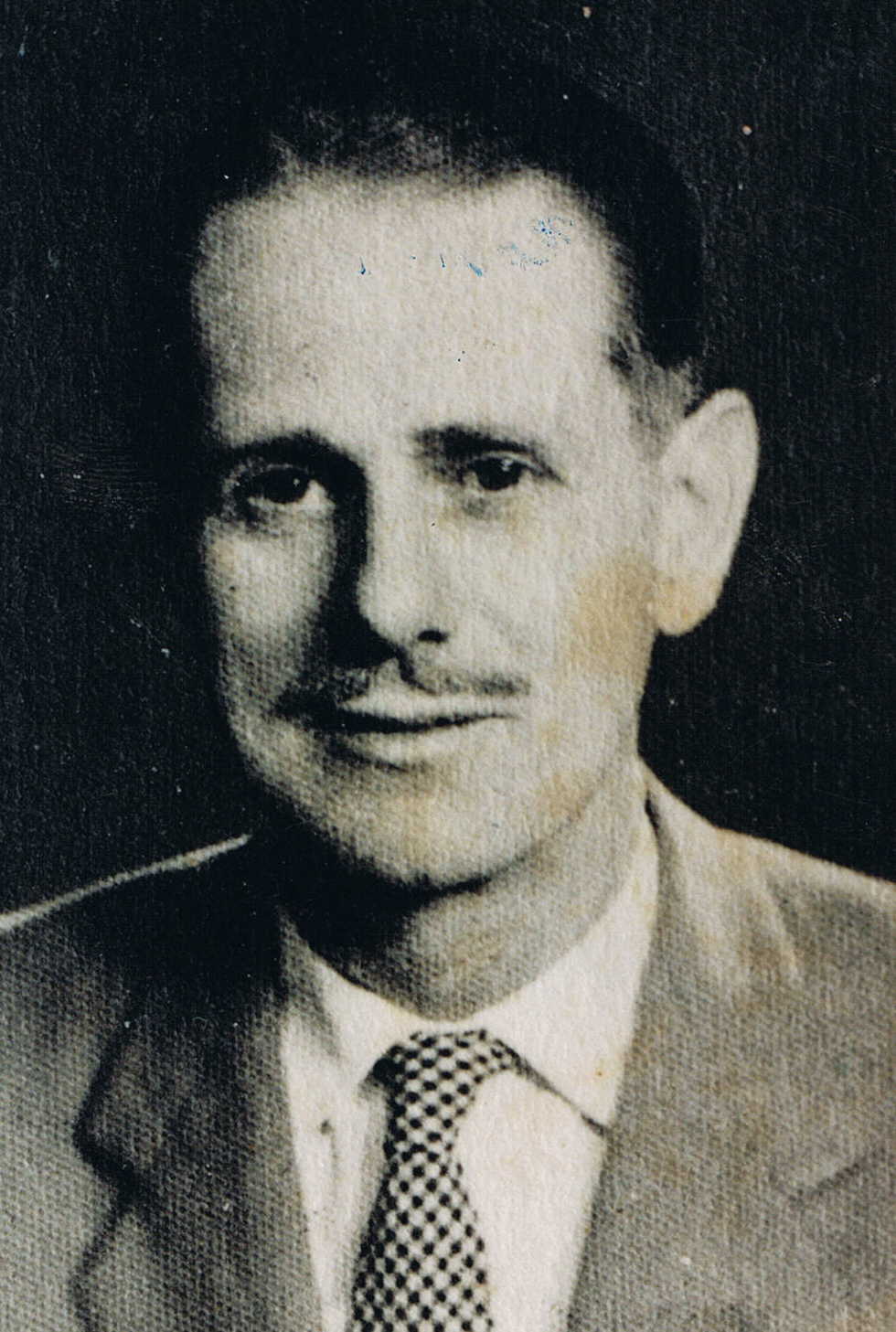 Ancestry
AncestryFather: Horace Henry Bingham, Mother: Eileen Minnie [Dowling]
Address in 193-36: 1683 Pacific Highway, Wahrooga
prev. Clerk
m. Jul 1938 in Camberwell, London, Nina Mary [Jeffereyes]
ATA
Postings:
Royal Australian Air Force (RAAF) in WWII - looks like he was in a Sunderland squadron:
 Ancestry
AncestryHe sailed to South Africa on 19 Aug 1942 as a 'Civil Aviation Traffic Officer'. He gave his address as 38 Underhill Rd, E Dulwich, London SE22
He flew to Honolulu, en route to California, in November 1957, on Qantas:

d. 10 Jun 1980 - Poole, Dorset
* ATA Personnel File Missing
-
Bray, Thomas Charles David
M.194 First Officer Thomas Charles David ‘Tom’ Bray 
b. 22 Jul 1906, Sheffield, Tasmania 1 Oct 1940 to Mar-42
 ? ATAM
? ATAMNext of kin: sister, Sylvia M Bray, 2 Paterson St, Launceston, Tasmania
Prev. exp. 420 hrs
Tom was one of a number of Australians who came over to fly for the Yorkshire Aeroplane Club, but when all civilian flying was stopped on the outbreak of WWII in October 1939, he applied to join the ATA.
They rejected him on the basis of his flight test, but then contacted him again the following July and asked if he would like to be reconsidered; he replied that, in the meantime, he had taken a job with the Rapide Flight of the Bristol Aeroplane Company, but would indeed like to re-apply.
His next flight test in August 1940 assessed him as: “A pilot of limited experience, who has ability and may prove adaptable to modern aircraft, of which he has no experience.”
Thomas then started with the ATA and worked well for about a year at Hawarden, but then resigned as the situation in the Far East deteriorated and he became worried about things at home.
However, his C.O. ‘Wal’ Handley wrote to the ATA to say: “I do not want to lose him, as he is a good pilot”, and they agreed to release Tom in the event of hostilities arising between Japan and Australia.
He withdrew his resignation, but died in an aircraft accident a few weeks later.

d. 18 Mar 1942 (Died in ATA Service) – his Hampden X3130 went missing after taking off from Kirkbride at about 15:00, heading for Thorney Island. He and 2nd Officer Nathaniel Berry (joined 1941) were presumed lost at noon the following day when no sign had been seen of them.
His body was eventually washed up on the shore at Southport, on the 8th June 1942. Cause of death could not be determined. He was buried at Maidenhead Cemetery on the 13th:
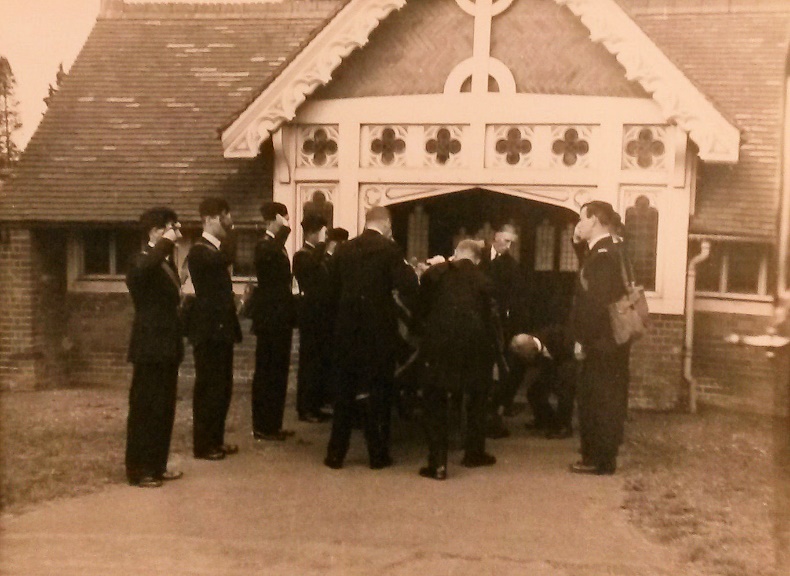



 "Sadly Missed"
"Sadly Missed"As sometimes sadly happened, a final letter from home arrived after his death. It is dated 5 Feb 1942:
“Thursday morning thought I could pen you a few lines while I am waiting for my fruit and vegetable to come in.
Received money last Friday £24 18s 6d don’t know if that was right I haven’t had any letter to say how much you were sending. The last letter received from you was dated back to sometime in Aug and it arrived the first week in Dec. You said in that you would make arrangement and let me know later when and how much. Anyway thanks very much it arrived just in the nick of time. I ran myself a bit short last month paying £25 for wireless and I gave Stan £20, I had to pay £50 for vegetables for the Military for Feb. so you can guess I was just about on the rocks.
Well Tom the war gets closer every day. This is Monday the 9th and the paper says Japs are landing in Singapore. Mum seems to worry about it she is so helpless, and there all day on her own. She seems a lot better than she was last time I wrote, but said she felt crook this morning when she got out of bed.
Our petrol has been cut again so I don’t get out weekends at all, though we did run up to Mabel’s for a few hours yesterday. We have to black out the car lights and everything. What I can see we are going to have a cold black winter. The weather is terribly dry, and vegetables are very dear. But that is all the better for me, can always sell more when it is a good price.
Auntie A had a long letter from Bett. She is doing canteen work three days a week, and said she hadn’t heard any more of you but would write you in a few days. Edward is away a lot at night. Your letter must be hung up somewhere. I wonder if you are getting mine this is the third time since Xmas. We received greeting and it did your mother a lot of good.
Well Tom Rita, Dorothy and myself had a day at the Launceston Cup. Had quite a good day and it cost us 1 shilling for expenses, but it was a very poor meeting, no Melbourne horses, and very poor div’s. I wasn’t game to take my car, as they were checking up on all the cars registered for business, they are not allowed on pleasure trips, and for the first time I realised how hard it will be if I can’t get petrol.
Stan started on his new house this morning. He has two boys at work and they are going to school at night. So he should be alright now.
Business is going well so far, so I suppose I am lucky. There are quite a few shops closing up.
Well Tom it is time I did a bit of work. I have a boy and girl in the shop, they are only 14 years but they do a very good job.
That must be all for now so cheerio and heaps of love from Mum and Syl.”
-
Cholmondeley, Victoria Millicent (W.39)
W.39 First Officer Victoria Millicent Cholmondeley 
b. 5 Mar 1902, Longford, Tasmania 10 Mar 1941 to 30 Nov 1945
 RAeC 1932
RAeC 1932Father: Richard Vernon Cholmondeley, (vigneron, Hurtle Vale Vineyard Happy Valley near Adelaide, d. 1918); mother: Hilda Georgiana [Leyland], by 1941 living in South Africa
brothers Richard Vernon (b. 1909, 2nd Lieut, Royal Scots Fusiliers, d. 27 May 1940 in Belgium) and Charles Christopher (b. 1917); sisters Hilda Georgina (b. 1901), Lettice (b. 1911) and Caroline Ethel (b. 1913)
Travelled to Adelaide in Jul 1906, to the UK in Jan 1920, then to New Zealand in Oct 1922, to Canada from the UK in 1928, then back to the UK in Aug 1931
Her "large pointer dog" was stolen in Gepp's Cross, S. Australia in 1925
First woman in South Australia to get a pilot's licence:
 1929
1929via Jerome Wells
Address in 1932: Leighton Hall, Welshpool, Montgomeryshire (with sister Lettice)
prev. Farmer; "Branch of the War Office" from 3 Sep 1939
Address in 1941: 18 Queens Gate Place Mews,. London SW7 (with brother Flt-Lt Charles Christopher Cholmondeley MBE and sister Hilda Georgina)
 1942 caricature by 'Sammy' Clayton
1942 caricature by 'Sammy' ClaytonKing's Commendation for Valuable Service in the Air
Still living at 18 Queens Gate Mews, with Charles and Hilda, in 1956, but alone there in 1964 after Hilda moved to Dorset and Charles got married.
d. 13 Jan 1986 - Hereford
-
Fisk, Thomas Maxwell
M.947 2nd Officer Thomas Maxwell Fisk 
b. 9 Jun 1919, Sydney, Australia 18 May 1943 to 25 Jun 1944
 ATA
ATA Australian War Memorial
Australian War MemorialFather: Sir Ernest Thomas Fisk FRSA. 16 Beaconsfield Terrace, Lindfield, Sydney, Australia [Director General of Economic Development, and a former Secretary to the Economic Cabinet, in Australia] - see https://adb.anu.edu.au/biography/fisk-sir-ernest-thomas-6177
Ed. Geelong, Australia
prev. a University Student, then an Engineer Officer on board SS "Queen Mary" [Jan-Jun 1942] then SS "Queen Elizabeth"
prev. exp. 10hrs on Gipsy Moth - failed RAF entrance due to his eyesight
Postings: 5TFPP, 4FPP, 1FPP, 83 GSU (Seconded for 1 week)
In October 1943, he and fellow Australian pilot Ian Llewellyn asked for, and were given, permission to wear 'Australia' on their uniforms. "We have lived in Australia all our lives and arrived in this country early this year."
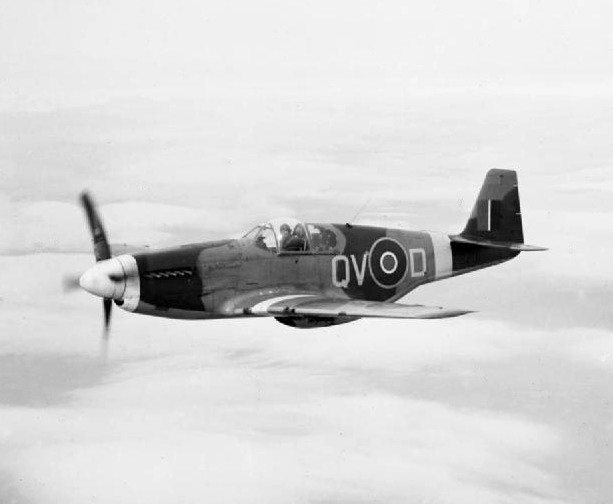
d. 25 Jun 1944 in Mustang III FB348 which crashed near Petworth, W. Sussex. "...the pilot was executing violent manoevres near the ground, probably resulting in a high speed stall. The aircraft then spun to the left and crashed."
Cremated at Golders Green Crematorium; his ashes were scattered from DH Rapide X7417 over White Waltham Airfield on 8 July 1944. Ian Llewellyn and Flt-Sgt Pollard flew as passengers, with Capt. Herbert Mason as the pilot.
-
Gething, Margaret Helen (W.94*)
W.94 * First Officer Mrs Margaret Helen 'Mardi' Gething 
b. 20 Dec 1920, Melbourne, Australia 12 Aug 1942 to Sep 1944
 RAeC 1939
RAeC 1939 1945
1945née Gepp
Father: Sir Herbert William Gepp, "mining metallurgist and manager, public servant, industrialist and publicist"; mother Jessie Powell [Hilliard]
m. May 1940 in Toronto, Flt-Lt Richard Gething
Postings: 15FPP
3 accidents, none her fault:
- 12 Dec 1942, forced landing in Avro Tutor K3276 following engine failure
- 30 May 1943, her Argus EV785, was hit by Spitfire VII R7211 being taxied by Mary Wilkins, damaging the Argus' propeller and the Spitfire's wingtip. "The pilot's [Wilkins] judgement was probably impaired by the effects of an accident two days earlier. She should have been medically examined before flying again and O.C. 15FPP is therefore held responsible"
- 15 Aug 1944, a forced landing in Swordfish III HS553 after a petrol leak into the cockpit.
She sailed back to Australia in November 1944 on SS 'Nestor'
"She returned to Australia, and in early 1945 joined the crew of Lancaster bomber "G for George" as public relations officer for its tour of Australia to raise money for the Third Victory Loan Appeal.
In the 1940s, Mardi also worked briefly for The Age as a society reporter.
When Richard returned to the Air Ministry in late 1945, Mardi joined him to resume life together in a small village south of London. Their two children were born in 1947 and 1949. Mardi continued her flying career as a member of the RAF Volunteer Reserve until Richard was posted for two years to Singapore.
Later the family was stationed in Northern Ireland, then in Scotland, before Richard (now an Air Commodore) worked a final stint at the Air Ministry in London.
In 1959, the family returned to Australia, settling at Red Cliffs, near Mildura. Here Mardi's and Richard's interests turned from powered aircraft to gliders. They became enthusiastic members of the Sunraysia Gliding Club, joined during school holidays by their children, who became solo pilots soon after their 15th birthdays.
Mardi, a keen member of the Australian Women Pilots Association (AWPA), became the first female licensed gliding instructor in Australia, and for a time held the women's altitude record for a glider flight (13,000 feet). Mardi and Richard both became nationally accredited gliding instructors and taught new club level instructors around Australia.
In 1966 they moved to the Gepp family property at Kangaroo Ground near Melbourne, from where they continued their Australia-wide gliding activities. In retirement, they travelled widely around Australia and overseas, visiting wartime and service friends and colleagues. They also took the opportunity to drop into any gliding centres on their route.
When Richard died in 2004, their wonderful partnership in aviation had lasted more than 64 years.."
Mardi Gething's obituary written by her daughter Mary-Jane Gething and published in The Age newspaper on Aug 11, 2005
https://www.spitfireassociation.com/
d. 16 Jul 2005 - Templestowe, Victoria, Australia
-
Hayward, David Russell
M.839 First Officer David Russell Hayward 
b. 7 Jun 1920, Adelaide, Australia 9 Dec 1942 to 21 Apr 1945
 ATA
ATAFather: Edwyn Walton 'Jim' Hayward CBE, OBE, a director of John Martin's department stores [d. 1933], mother Eileen Frances [Russell, originally a New Zealander]
- see https://oa.anu.edu.au/obituary/hayward-edwyn-walton-jim-15383
Moved to the UK when 5 years old [but wrote 'Australian' on his application form]
Ed. Harrow
m. 1941 in London, Peggy Alice Georgina [Farmer]
prev. RNVR; Fleet Air Arm 27 May 1940 - 4 Sep 1942 Temp. Sub-Lieut (Air) on HMSs Furious, Argus, and Eagle
prev. exp. 200hrs in Tiger Moth, Magister, Battle, Gladiator, Master, Proctor, Swordfish, Albacore, Skua, Roc, Fulmar, Hurricane
Address in 1942: c/o H L Farmer, Esq., 31 Eresby House, Rutland Gate, London SW7
Discharged as unfit for First Line flying - he was "consistently ill at sea"
Postings: 9FPP, 1FPP
Two accidents, one his fault:
- 15 Dec 1943, he undershot the runway during a forced landing in Walrus HD916 after engine failure and/or bad weather; he sustained head injuries and concussion, and spent 3 weeks in hospital at East Grinstead.

d. 21 Apr 1945 in Fairchild Argus II HB595, which crashed 3/4 m west of RAF Lasham.
He had arranged to sleep in the aircraft, which needed to be at White Waltham early the next morning, after attending a function in the RAF Mess. He may have lost track of time though, as he took off at 03:30, failed to fully open the starboard fuel cock, and crashed.
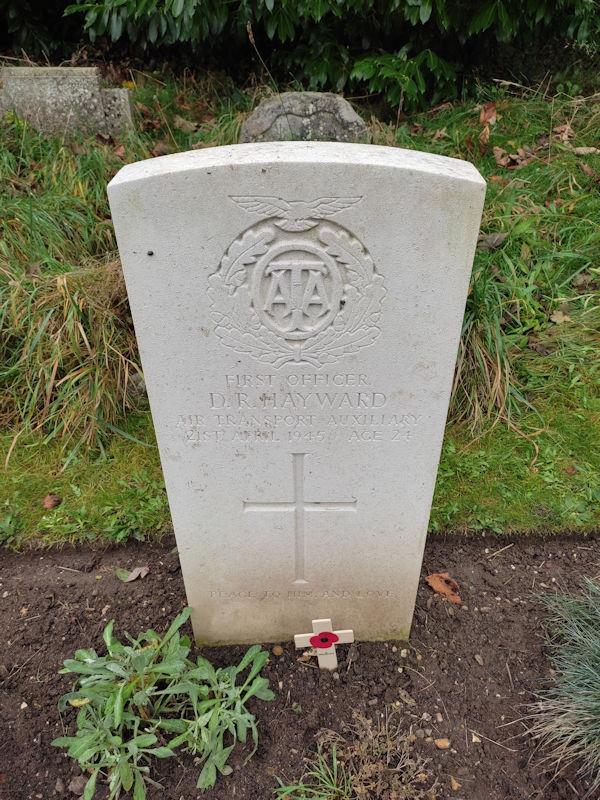
Buried Maidenhead - 21W Section D
-
James, Alfred Francis Phillip
M.802 * 3rd Officer
[Seconded from RAF]
Alfred Francis Phillip James 
b. 21 Apr 1918, Queenstown, Tasmania c. 1 Dec 1942 to c. 15 Apr 1945
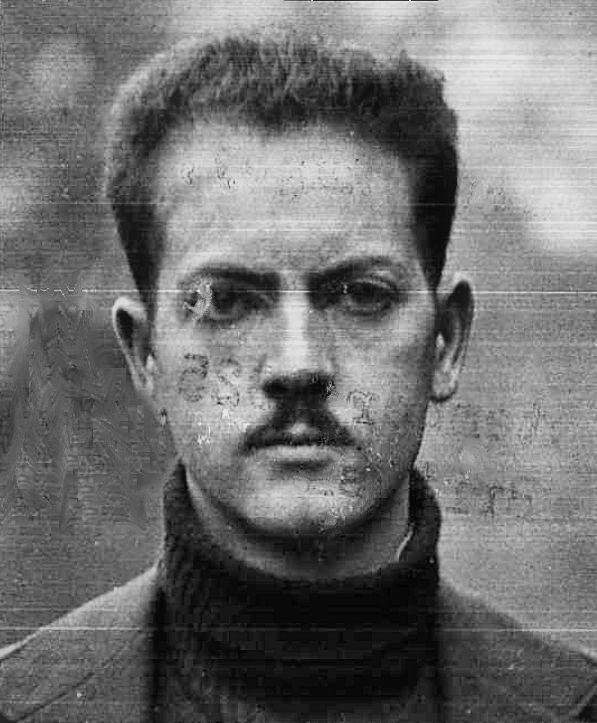 1945
1945 ATAM
ATAMAddress in 1945: Baliol College, Oxford
-
Mayers, Howard Clive
M.---- First Officer Howard Clive Mayers DSO, DFC and bar 
b. 9th January 1910 in Sydney 22 Jan 1940 to 9 Mar 1940

Read engineering at Jesus College, Cambridge, but left when his father died, and formed Air Log Ltd in May 1932, making instruments for aircraft and ships. Commissioned into the RAF in WWII, initially as a test pilot and then with 601 (County of London) Squadron AAF at Tangmere during the Battle of Britain. Later posted to Egypt. At least 10 victories.
His 1942 DSO citation reads "Wing Cdr Mayers is an expert on bombing and machine-gun attacks and his tactical knowledge has contributed much to the success of long-range fighter operations. On two occasions in May this officer led a formation in attacks on aircraft bringing supplies to the enemy and destroyed many of them."
Killed in WWII: 20th July, 1942 when a Wing Commander 250 Sqn RAFVR; commemorated on the Alamein Memorial.
Mayers radioed that he was having engine trouble and was making a forced landing in the Qattara Depression. His aircraft was found and, there being no trace of him, it was presumed that he had been captured. Mayers was not heard of again and may have been lost in a Ju52, which was shot down whilst ferrying PoW’s to Germany.
King's Cup in 1932, London-Newcastle race in 1932
-
Ramsay, Diana Patricia (W.69)
W.69 First Officer Diana Patricia Ramsay 
b. 9 Jun 1918, Brisbane, Australia 16 Dec-41 to Jul-45

 ATA
ATA ATAM
ATAMFather: Robert Christian 'Bob' Ramsay (b. 1861 in Cheltenham, Glos - d. 25 Jun 1957 in Bekesbourne, Kent), mother: Olive Zillah [Voss] (1886 - 24 Dec 1957 - Lincolnshire)
Her father Robert was an amateur cricketer who played for Harrow, Cambridge University and Somerset. "In 1882, he also played for the Gentlemen of England under W.G. Grace". He and his brothers owned enormous sheep stations in Australia - see https://en.wikipedia.org/wiki/Robert_Ramsay_(cricketer)
Younger sister of Joan, also of the ATA: (see Ramsay, Olive Joan).
They had 2 more sisters (Susan Mabel Christian 'Betty' [Homer] b. 1908, and Norah Honor [Johnston] b. 1911) and 3 brothers (Alexander b. 1910, Norman b. 1915 and David b. 1924)
Robert having grown up in Australia, the Ramsays moved to Kent in 1920.
They lived at 'Howletts', Bekesbourne, nr. Canterbury, Kent (the Ramsay family home, now a 90 acre wild animal park):

Robert, Olive Zilla and Olive Joan, David and Diana (age 7) sailed to Australia in Nov 1925, returning Jun 1926
The Flying Ramsays
"Diana learnt to fly at Kent Flying Club - her father was one of the founders" - Daily Herald
[In fact, Robert and Alexander, together with John H Barringer (the Chief Flying Instructor, who had taught Robert to fly in 1932), formed 'Air Sales and Service Ltd' in 1935 "to acquire property and assets of the Kent Flying Club and carry on business of carriers of passengers and goods by air" - Flight]
Robert personally owned, at various times:
- G-AAKO, G-AAEU and G-AAGT, all 1929 DH Moths;
- a 1932 Cierva Autogiro C.19 IV G-ABUH (which was sold to Australia in 1934);
- a 1933 Miles M2 Hawk, G-ACHZ (which crashed at Bekesbourne in 1939, killing the student pilot, Cecil Dobson);
- G-ADCY, a 1935 Miles M.2H Hawk Major, and
- G-AHDI, a 1935 Miles M.3a Falcon Major,
In 1933, 'Flight' reported that Mr Ramsay "still continues to fly both a 'Moth' and an 'autogiro', although 71 years of age".
Alexander also owned a 1930 DH Moth, G-AAWX, and G-AAVD, a 1930 Southern Martlett (which competed in the King's Cup Air Race in 1930, but retired near Newcastle)

1932

Ancestry

1932

1933

1935
Robert Susan Norman Alexander Robert, Susan, Norman and Alexander all held RAeC certificates, all taken at Kent Flying Club.
Sadly, Norman died in an air crash in his father's plane; G-AAEU was "written off (destroyed) when it stalled and crashed during an aerial treasure hunt at Adisham Downs, near Charing, Kent 2 Sep 1934; pilot Norman Ian Ramsay [owner's son, aged 19] and passenger John Wilfred James (aged 33) were killed."
Joan also made her first solo aged 16, but neither she nor Diana appear to have gained a pre-WWII RAeC Certificate.
Postings: 5FPP, 1FPP
7 accidents, mostly her fault:
- 2 Sep 1942, one wheel of her Master Ic T8447 ran off the perimeter track while taxying at Prestwick, and the aircraft tipped onto its nose
- 17 Oct 1942, the hood of her Master I N7631 blew off in flight after an airman released it on the ground when talking to her (but she should have re-checked it)
- 15 Dec 1942, she landed late at an unfamiliar airfield in Bedfordshire in Spitfire IIb P8521, the undercarriage hit an obstruction and collapsed
- 17 Jan 1943, a wheels-up landing in Mustang I AG603, although no fault was subsequently found
- 15 Nov 1943, she made a heavy landing at Heston in Spitfire IX MJ462, damaging the tail unit
- 2 Jun 1945, a forced landing in Mosquito VI NT120 at Benson, after a port engine fault
- 5 Jul 1945, Whilst attempting a forced landing at White Waltham in Tempest V MW827, "the aircraft overshot and crashed in a wood a mile beyond the boundary of the airfield. The primary cause of the forced landing was an engine defect which fixed the pressure at +5 lbs boost with no throttle control. The cause of the gross overshoot was an error of judgement on the part of the pilot in handling the situation, for which she was held responsible; she was held not responsible for the engine failure"
Her nephew kindly tells me that she was "said by at least one American ATA pilot during a radio interview some years ago – the transcript of which I have somewhere – to have been one of the ATA's most amazing pilots until the throttle of her Tempest jammed one day and forced her to land in a grass paddock at horrendous speed."

Royal Aero Certificate 22869 17 Jun 1947 at Wiltshire School of Flying, on an Auster
She sailed to Australia in Nov 1951, describing herself as a 'Secretary'
d. 7 Jun 1952 - Lismore, Richmond, NSW
"Despite her claims that she came away from the crash with only a few scratches, she was never the same ebullient person she had been before. She died alone of a drug overdose on a remote road near Lismore in northern New South Wales in 1952. The coroner declared that the overdose was accidental and, even though they suspect otherwise, her close relatives are happy to accept that."
"Miss Diana Patricia Ramsay, aged 34, of Canterbury, Kent, crack war-time ferry pilot, was found dead beside a new car on a lonely country road yesterday. A large sum of money was found with her body, but police do not suspect foul play"
"Attractive and wealthy, Miss Ramsay left England last December to visit friends and relatives in Australia. Her father, R C Ramsay, and her uncles owned vast sheep stations there. " - Daily Herald, 9 Jun 1952
["Ramsay Brothers & Hodgson acquired numerous Queensland sheep stations and, after the premature death of Edward Hodgson in 1896, became one of the largest sheep-farming enterprises in the world." - Wikipedia]
"A farmer, who had seen her new car parked for two days near Lismore, New South Wales, found her lying dead beside it. At the inquest, opened and adjourned on Moday, it was said the a post-mortem had failed to find the cause of death. A relative said Miss Ramsay had been highly nervous since a wartime crash."
"Her sister, Mrs E C Boucher [i.e. Joan], of Bexon Manor, Bredgar, Sittingbourne, told the Kentish Express: "The news of Diana's death came as a great shock to the family. Her letters home had said how happy she was." - Kentish Express - 13 Jun 1952
"Diana Ramsay, 34-year old British wartime ferry pilot, who was found dead by her car on the road near Lismore New South Wales in June, took an overdose of a sedative drug unaware of its lethal effect', the Coroner found at the inquest yesterday. It was not suicide, the coroner decided." - Daily News (London) - 7 Jul 1952

"Four Years a Ferry Pilot in the A.T.A.
Brave Gentle Di. At last you are at rest.
You proved your courage and you passed your test
But paid the price with shattered nerves
That brought you here."
-
Ramsay, Olive Joan (W.---)
W.--- Cadet Olive 'Joan' Ramsay 
b. 29 Oct 1916, Brisbane Australia 25 Jul-42 to 5 Sep-42

ATA

1948
Diana's sister (see Ramsay, Diana Patricia)
Ed. Endcliife, Eastbourne; Paris
resident 'Howletts', nr Canterbury
First solo age 16 at Kent Flying Club in September 1933 ("Flight")
prev: Ambulance Driver from Aug-40
prev exp: 2hrs
[Contract Terminated by ATA]
m. 1948 Eric Comyn Boucher

d. 17 Dec 2004 - Kent
For more about 'The Flying Ramseys' see Ramsay, Diana
-
Wikner, Geoffrey Neville
M.45 Flight Captain Geoffrey Neville Wikner 
b. 28 Aug 1904, Grafton, NSW, Australia 8 Apr 1940 to 20 Nov 1945
 c. 1938
c. 1938 ATAM
ATAMEd. N. Sydney C of E Grammar School
Prev. Technical Director, Wicko and Foster Wikner Aircraft Companies:
[e.g. here is his Wicko 'Wizard' from 1934:
 'Flight' ,
'Flight' ,and

'The Wicko over the River Trent' by fellow ATA pilot Stanley Orton Bradshaw (q.v.) ]
m. Gertrude Violet (b, 27 Aug 1914, d. 21 Apr 1952 after an operation - Newcastle, NSW, Australia)
Address in 1940: The Round House, Danes Rd, Romsey, Hants
prev. exp. 500 hrs
--------------
Postings: 2FPP, 1FPP, 5FPP, 6FPP, 15FPP (as Commanding Officer, from 10 Feb to 5 Dec 1941)
"A keen, hard-working officer of considerable flying ability who has now delivered over 1,000 aircraft (61 types), as well as flying 524 hrs as a taxi pilot"
Off sick from 10 Mar to 13 Jul 1943 after a flying accident, when his Typhoon suffered a complete engine failure during approach.
Demoted from Flight Captain to First Officer for a month in Oct 1943 for "wilful disobedience of Standing Orders C.2 and D.21"
Certificate of Commendation, 29 Aug 1944: he was "ferrying a Lancaster when a technical problem caused all four propellers to randomly feather and unfeather. He managed to recover the use of the port engines and make a safe forced landing."
Feb-45: "This officer has the experience and ability necessary for leadership but he now has little ambition to hold any responsibility in ATA and is well content to only undertake such responsibilities as may be assigned to him from time to time. These he carries out in a capable manner"
-----------
The Flight of "Waltzing Matilda"
 BG
BGUnable to get a passage back to Australia, Geoffrey bought a war-surplus Halifax to fly him, his wife and two children 13,000 miles "to see his mother and other relatives in Australia".
He advertised for passengers willing to share the cost, and got about 500 replies, along with thousands of telephone calls. They decided to give priority to girls who wanted to be married in Australia, as they were "not allowed priority, like girls who are already married to Australians."
The Halifax B.III was taken to Radlett and fitted out with canvas seats for 15 people, "and other modifications" (which, let's hope, included a toilet... or two...?)

"Plotting their course: Captain and Trudy Wikner with their children Kynaston Val and Isabel Christina" - The Sketch, 23 Jan 1946
----
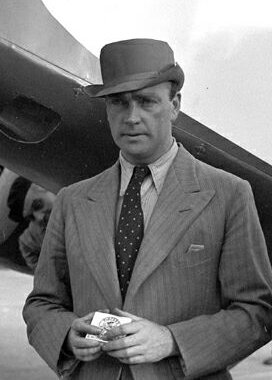 Famous pre-war pilot Neville Stack was due to be the co-pilot, but two weeks before departure he declined.
Famous pre-war pilot Neville Stack was due to be the co-pilot, but two weeks before departure he declined.Dr. C. B. Heald, who was intending to be the on-board medical officer, also pulled out in late March.
June Newton, a secretary from Cheltenham who was originally 'thrilled' to be offfered a place, also dropped out in March; she changed her mind and decided to go by sea instead.
Eventually, he took these 19 people with him,
- wife Trudy, children [Kynaston] Val and [Isabel] Christina;
- Audrey Joan Morgan (co-pilot). Audrey (q.v.) was also an ex-ATA ferry pilot, and said she wanted to go because she was "fed up with England";
- Charles B. 'Scotty' Scott, DFC, DFM (ex-RAF, Navigator), from Fife, and his 30-month old daughter Anne. His Australian wife had planned to go too, but died three weeks before take-off;
- Horace Charles 'Bonny' Seccombe, (Flight Engineer) also ex-ATA, who Geoffrey said was "really the only crew member I could not have done without";
- Capt. Thomas 'Tom' Sulman (Flight Engineer), a well-known racing motorist, originally from Sydney, ex-British Army, who also helped with the conversion of the aeroplane. A widower, he went to see his 18 year old daughter and 80 year old mother;
- Gordon Toye (Radio Operator), because he "held a PMG licence, although he had only worked in air sea rescue boats".;
- Capt. A B Carter;
- Mr E C Webb;
- Inman Hunter, a British-born film editor who "hoped to make films in Australia";
- Mrs Ruby Colleano, an 'acrobatic dancer' from Melbourne, who was visiting Australia again after 20 years;
- Mrs Eileen Rust, from Katinning, Western Australia, a 39-year old former WAAF corporal who had married in England. She wanted to visit her 76-year old mother, who was ill;
- Mrs Winifred E Montgomery, who had married an Australian ship's engineer;
- Mrs Morough Bernard, wife of a serving member of the RAAF; he saw her off at Hurn;
- Lady Farwell; an Australian, b. Euphemia Leslie Russell Hope, the oldest passenger (aged 60), widow of Sir Christopher Farwell (a former English Chancery Judge, who died in 1943), returning to Australia after 30 years away;
- Miss Noreen Brown, who acted as secretary for the flight;
- Miss Freda Surridge, from Surrey, who went to meet her fiance, RAN Surgeon Lt. MacAlpine Mackay, in Sydney, and
- Miss Mary 'Mollie' Bremner, who made the trip "for fun", and "because she wanted to see Australia".
They took food, a tent in case of emergencies, and toys and games "to amuse the excited children". All luggage (each passenger was allowed 100lb) was stowed in the bomb bay and the passengers either sat in the canvas seats or were dispersed around the aircraft in the various crew positions.

 RAeC
RAeC(l) Charles Scott (Dundee Courier);
(r) Val and Christina Wikner have their Mae Wests fitted by E C Webb, one of the passengers

 RAeC
RAeC(l) Mrs Morrough Bernard and Freda Surridge fitting on their lifebelts before the departure;
(r) Ruby Colleano and Audrey Morgan walking to the plane for the take-off.
They took off from Hurn airport at 10 a.m. on the 24 May 1946, and arrived, 73 flying hours spread over 22 days later, on the 11 Jun 1946. Lady Farwell was not on board by then; she flew from Brisbane to Melbourne by private aircraft.
Geoffrey's parents (Major Wikner and Mrs M I Wikner) were the first to greet them on their arrival.

L to R: Val Wikner (9), Audrey Morgan, Capt. Wikner, Chrisabel Wikner (5 1/2) and Mrs Wikner.
They got a rather a chilly reception when they arrived at Mascot; "no officials, either Federal or State, except Customs officers, greeted them and no refreshments were offered or were available, except a picnic meal supplied by relatives of Cap. Wikner, and laid out on rugs on a lawn near the control tower."Geoffrey and Trudy set up Halifax Holiday Park, in Nelson Bay, NSW, and although Trudy died in 1952, Geoffrey ran it for 19 years. It recently celebrated its 70th anniversary.[The Halifax? Well, "Geoffrey tried to sell the bomber to the RAAF for training purposes without success. It was even offered to the Canberra War Museum as a gift, but alas, was not accepted. It did make one final flight to Singapore though after being bought by some aviation enthusiasts. The commercial venture failed and it was finally sold at auction and cut up for scrap in 1948.“It was a sad ending for such a wonderful aeroplane,” Wikner said." ]
m. 1954 Patricia [Dunhill]d. 27 Jun 1990, NSW Australia

